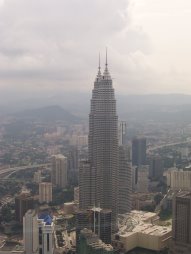Businesses cost money to run. As well as paying workers and making products, they have overheads to pay. Where does the money come from?
Two main sources of finance:
<![if !supportLists]>n<![endif]>Internal
<![if !supportLists]>n<![endif]>External
Internal Sources of Finance
<![if !supportLists]>n<![endif]>Owner’s Capital – this is the money raised at the start of the business or funds invested later by the owner
<![if !supportLists]>n<![endif]>Retained Profit – monies saved up over the years, but depends on turnover, mark-up, and control of costs
<![if !supportLists]>n<![endif]>Efficient firms use profits to reduce external borrowing and provide cash to pay any outstanding liabilities
External Sources of Finance
<![if !supportLists]>n<![endif]>Shares – two types: Ordinary and Preference shares. Ordinary dividend depends on profits, while Preference shares have fixed dividends.
<![if !supportLists]>n<![endif]>Debentures – a long term fixed interest loan (20-25 years). Debentures have first claim on profits.
<![if !supportLists]>n<![endif]>Mortgage – a loan secured on property -usually 25 years. If borrower doesn’t pay mortgage back, then lender claims property.
External Sources of Finance
<![if !supportLists]>n<![endif]>Loan –money lent to a borrower
<![if !supportLists]>n<![endif]>Hire Purchase – buy an asset and have use of it buy pay it off over a period of time
<![if !supportLists]>n<![endif]>Factoring – using a third party to recall your debts.
<![if !supportLists]>n<![endif]>Overdrafts – spending more than you have in your bank account
<![if !supportLists]>n<![endif]>Leasing – renting an asset
<![if !supportLists]>n<![endif]>Trade Credit – customers buy goods and pay for them later
Government Assistance
Some areas need more help from the Government due to high unemployment, poor infrastructure etc. Government provides Central Government Support and Local Government Initiatives.
Central Government Support
<![if !supportLists]>n<![endif]>Assisted Areas – certain regions of UK have priority to boost local economy. There are two kinds: Development Areas and Intermediate Areas.
<![if !supportLists]>n<![endif]>Regional Selective Assistance (RSA) – businesses can qualify for selective assistance allowing for project and training grants.
<![if !supportLists]>n<![endif]>Regional Enterprise Grants (REG) – aimed at small businesses, given Investment grants or Innovation grants.
<![if !supportLists]>n<![endif]>Enterprise Zones – aim to keep firms in certain areas of country, may be given tax breaks as incentive
<![if !supportLists]>n<![endif]>Urban Development Corporations – they manage and develop land by providing buildings, roads and services
<![if !supportLists]>n<![endif]>Training and Enterprise Councils (TEC) – responsible for funding of training and vocational education





No comments:
Post a Comment